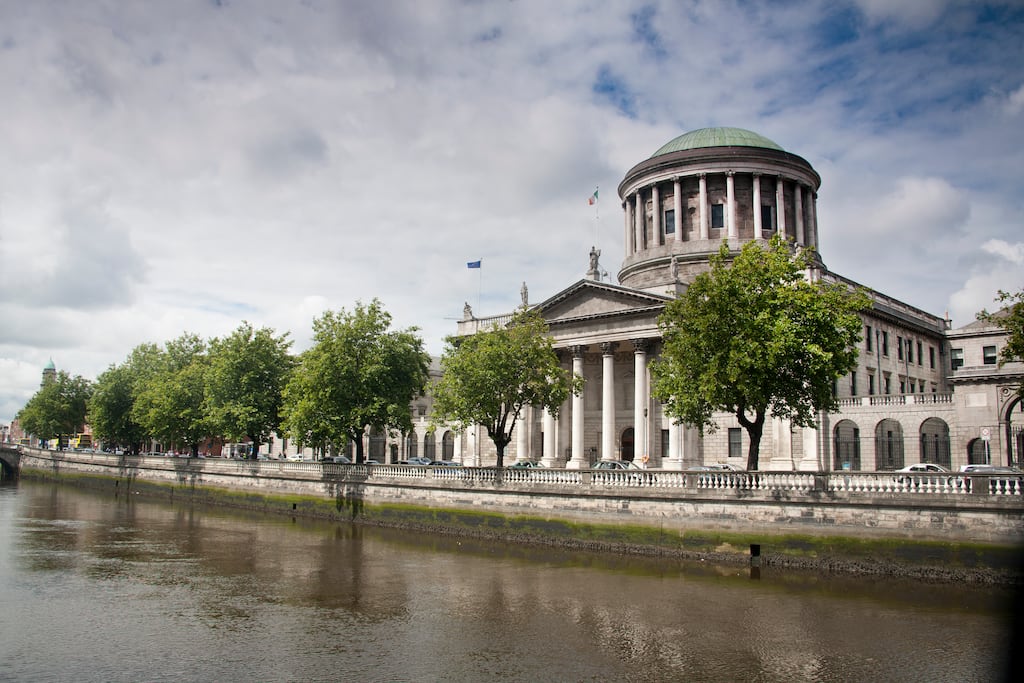A developer is unlawfully developing a Merrion Square property under planning permission that is currently subject to an appeal to An Bord Pleanála, the High Court has been told.
Minoa Limited, which owns numbers 2 and 3 on Merrion Square, says unauthorised works are being carried out on the Merrion Building (Morrissey’s) property, situated between the Davenport Hotel and 1 Merrion Square North.
It is suing the property’s owner, hotel and sales firm Persian Properties Unlimited Company, and management company Blue & White Diamond Unlimited, alleging they are each involved in carrying out the unauthorised development.
The Merrion Building property was the subject of a grant of planning permission in 2019 and 2020, which allowed for the demolition of the existing building and the construction of a five-storey office block. The 2019 decision was upheld by the appeals board, while the second was not appealed.
READ MORE
Permission revision
Persian Properties applied for a further revision of the permission, for various internal facilities and to extend the ground floor area beyond what was previously approved, says Minoa. Dublin City Council approved the revision in April 2022, but this decision is under appeal to An Bord Pleanála, Minoa alleges.
Minoa says the allegedly unauthorised works are similar to those approved under the 2022 decision and include a ground-floor extension, elevational alterations to the building, changes to the office dimensions, window system installations and bike parking removal and construction.
The firm’s barrister, Jarlath Ryan, told the High Court on Monday that the 2022 approval effectively does not exist until An Bord Pleanála determines the third-party appeal.
He asked Mr Justice Charles Meenan for an “urgent” hearing date for Minoa’s application for orders requiring the defendants to remove the allegedly unauthorised development and to restore the property, in as far as practicable, to its prior condition.
The judge gave permission for Minoa, which has an address at The Seapoint Building, Clontarf Road, Dublin, to give short notice to the defendants of the hearing, which he scheduled for Thursday.
The defendants were not formally notified of Monday’s application and were not represented in court.
Site inspection
In an affidavit, Minoa’s director, John McKeon said he had inspected the site and concluded the works taking place were unauthorised development.
He said the defendants, which both have registered offices at Hospitality House, South Cumberland Street, Dublin, have not only recognised the development is unauthorised but have committed to remediating it if permission is not upheld.
He pointed to a letter from their solicitor last month, which he alleged said the firms “fully and reasonably expect that the board will uphold the original decision of Dublin City Council […] and dismiss your client’s ill-motivated appeal”.
Mr McKeon said the lawyers said the alterations he complained of are “wholly reversible in the unlikely event that An Bord Pleanála refuses permission”. They allegedly said the works relate almost entirely within the footprint of a small ground-floor area which is outside a disputed right-of-way route.
Such an approach, said Mr McKeon, effectively created a new system of substituted consent that was “inappropriate and impermissible”.
He said the footprint of the property would be “significantly and irretrievably increased”, while a right of way enjoyed by Minoa would be diminished or entirely removed. He added that the firm had initiated separate proceedings in relation to the disputed right of way.
The property, he went on, was located in a conservation area and a zone of architectural interest under the Dublin City Development Plan. He believed the ongoing development presented a “considerable risk” to the built and natural environment.













